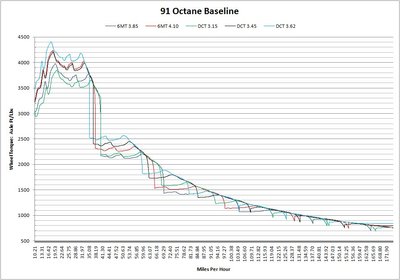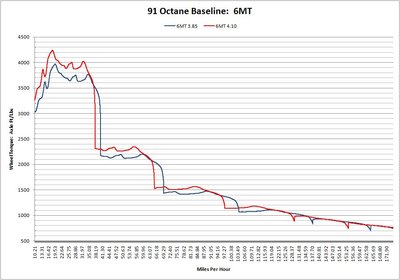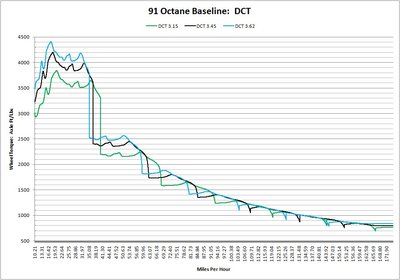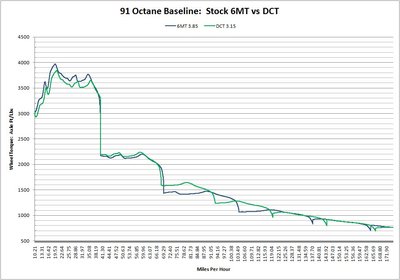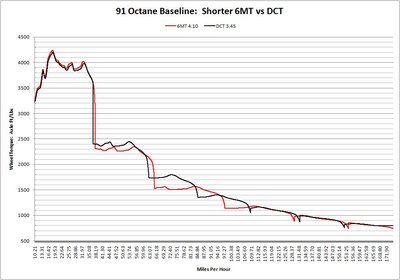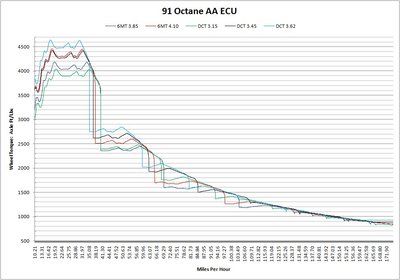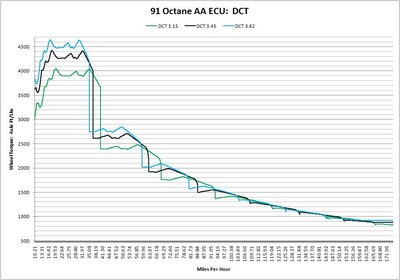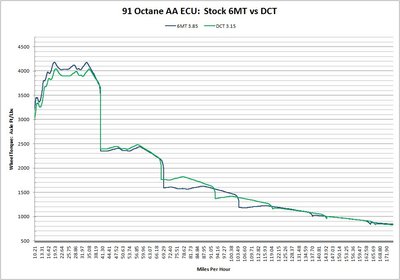In this original thread on m3post (here), the discussion started with a comparision of the stock 3.85 final drive and the new Dinan 4.10 final drive for the 6MT. Soon that discussion morphed into a general comparison between 6MT and DCT and all combinations of final drive ratios.
Even though it took some time, I finally figured out a way to collate the data from real dyno charts, map them on top of each other, and present the results in a single graph. It turned out to be far easier and faster than my previous methods of writing Visual Basic code to collate the data. With these spreadsheets, it is now possible to drop in your own dyno data (provided you have 6250 data points of each dyno run) and the spreadsheet will also automatically update all of the graphs. If you do this (which I doubt anybody will), simply drop it into column-B of each "6MT" and "DCT" sheet. Of course, it's possible to drop in ficticious torque data into this column to do "what-if" scenarios.
It's also possible to change the tire size on the "Tire Size" page of the spreadsheet. The default tire size was my own: 295-25-20. To change this, edit columns D-E-F of the "Tire Size" sheet. The graphs will automatically update themselves.
In case you're wondering, I didn't just pull these DCT ratios out of thin air. On the previous thread, there was a desire to compare 3.62 final drive with DCT. However, that ratio is not going to be offered by Dinan. Instead, it is far more likely that 3.45 DCT final drive will be offered instead.
Spreadsheets:
Download Excel 2007 Format Spreadsheets
Graphs
91 Octane Baseline:
91 Octane with Active Autowerke ECU upgrade
